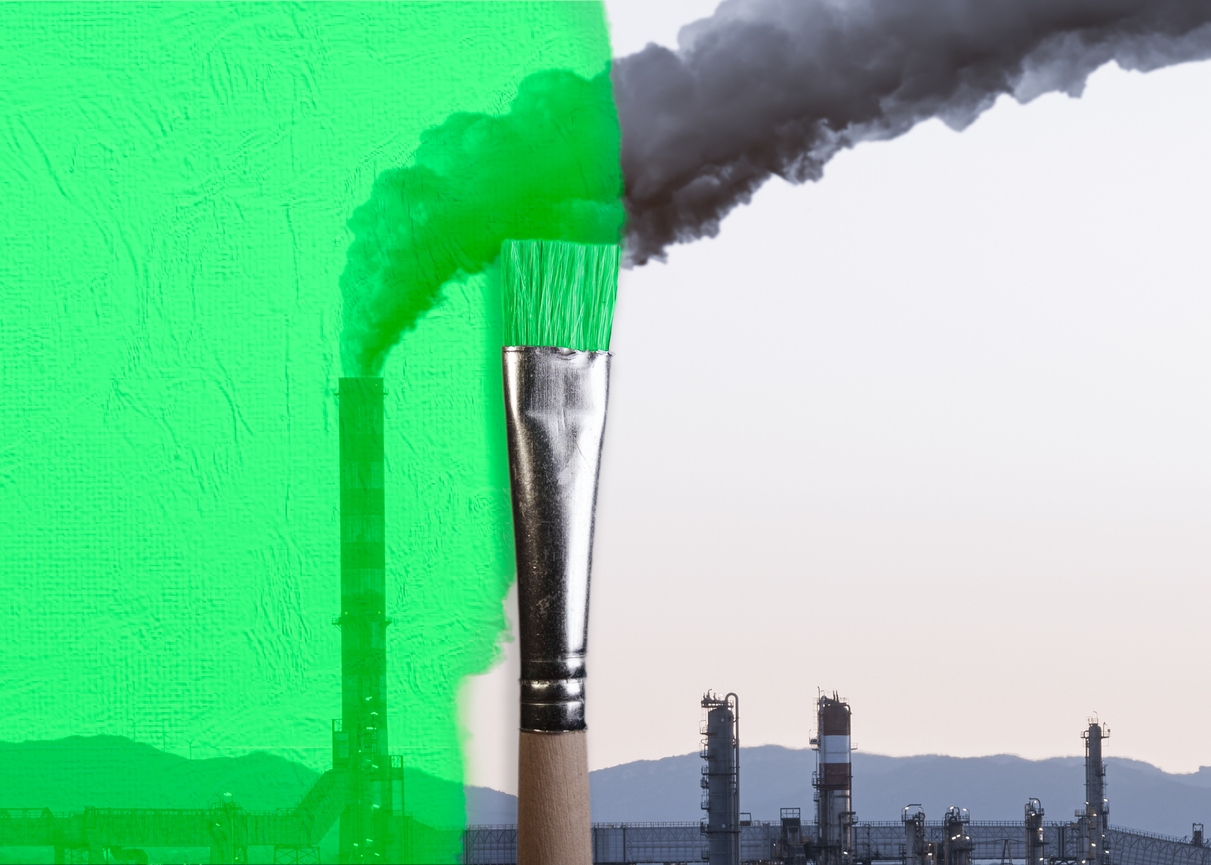Large brands use greenwashing to protect their social license and the public’s acceptance of their business practices and methods.
Greenwashing is an effective marketing tool brands use to present themselves as environmentally friendly. Companies are able to persuade the public that they are making and reaching their sustainability goals. The aim is to distract us with the green glow and enough buzzwords that we don’t think twice about trusting them. Greenwashing is becoming increasingly prominent in brands we all know and love and unfortunately for them, climate activists are exposing them and breaking the rose-tinted glasses they want us to wear.
Why are companies doing it?
Large brands use greenwashing to protect their social license and the public’s acceptance of their business practices and methods. By using bold statements expressing their goals and showing they align themselves with climate action they are able to win over supporters including those in government. This is an easy and effective way to convince people they are addressing the problem and wish to be a part of the solution to ease climate anxiety.
Examples of Greenwashing
- The statement from Ryanair that they were offering ‘low CO2 flights’ rang greenwashing alarm bells for many. The advertising was banned a few months later by the Advertising Standards Authority (ASA) which branded the statements “misleading.” The claims that they were “Europe’s lowest emission airline” could not be substantiated and a blatantly incorrect statement. The airline had used data from 2011 to make this claim and was advised by ASA to only use current data when making claims in adverts as it holds no value anymore.
- Making false claims or even exaggerating your goals are forms of greenwashing and provide just cause for being exposed. BP highly exaggerated their renewable energy investments being part of their business model when in reality this is a very insignificant part of their plans. They went on to talk about gas as a transition fuel however, this contributes to climate change and should be being phased out of our energy systems. Client Earth reports that 96% of BP’s annual spending is on oil and gas despite them claiming the company’s low-carbon energy products.
- Greenwashing is especially prevalent in the fashion industry where the high volume of garments and the speed of production causes harm to many areas involving ESG. Good on You is dedicated to shining a light on brands committing greenwashing and reports that production for the fashion industry accounts for 70% of the overall carbon footprint. This includes transportation, shipping methods, source materials and production facilities. Waste within fashion reaches an enormous high even at the production level. Burberry, the high-end luxury fashion brand caused scandal when they were found to have burned £28m worth of unsold clothes and perfume which is common within the fashion industry.
- FIFA had been claiming that the 2022 Qatar World Cup was the “first caron-neutral FIFA World Cup”. However, in June 2023 the Swiss Fairness Commission were able to disprove this statement quite quickly. The tournament was found to be the most polluting World Cup ever being responsible for 4.67 million tonnes of CO2.
How to spot Greenwashing
- Buzzwords – distracting us with big statements and keywords that the public will respond to is the easiest way for brands to make claims that have no substance. Throwing out phrases like, eco-friendly, all-natural, plant-based, and more does not automatically make them a stand-up business. They create attention for the brand whilst painting it in a good light. Labelling your brand as organic often means nothing as Good On You informs us that only 5% of organic cotton content in a product is needed to label it as organic.
- Lack of certifications – learn the logos you should be seeing on products. If the brand has made a statement to be cruelty-free, then the leaping bunny logo should be on display. If you want to know how to spot greenwashing, then learning the seals that you can find of products when a claim is made will help. You can find the logo on all of Aldi’s own brand cosmetics, personal care, and household products as they have been approved by Cruelty-Free International.
- Highlighting minimum wages for workers- this is the bare minimum and a legal requirement. Various brands have been shamed for underpaying staff including M&S, WHSmith and more despite being a large corporation with the means to pay staff correctly. The Guardian reports that In June 2023 the brands were collectively fined £7m for failing to pay the minimum wage. Investigations by the Department of Labour into working conditions in California found that brands were only paying 73% of what was necessary for factory workers. When advertisements highlight a brand paying the minimum wage to its workforce this is nothing to celebrate, while it seems like a positive action it is just a legal requirement and still does not meet the living wage.
Often this claim helps the brand retain its supporters and distracts from past or previous offenses.
- Packaging being eco on the outside – the cardboard box you receive your order in may have Eco written in big letters on it but are the products individually wrapped in plastic? Or are there tonnes of polystyrene inside? It is easy to put a big cherry on top to cover up the burnt cake underneath and packaging is a business’s way of doing that. In 2018 McDonald’s introduced their paper straws however, just a year later they were exposed for greenwashing as the straws weren’t actually recyclable as they cannot be processed. Unfortunately, it’s not always what it says on the tin.
Brands often spend thousands for their ‘green’ campaigns rather than dedicating that time and money to address their impact effectively. This money is used to distract and lie to the consumer, so their brand and products look overall better drawing us in with the green glow.












